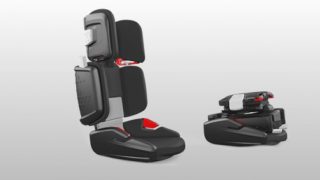For SQL Server Table Partitioning example, dividing the Sales table into Monthly partition, or Quarterly partition will help the end-user to select records quickly. We also illustrated the impact of dropping columns when the table has data. This is a very expensive operation, requiring about 4 times the logging of normal DML operations. The partitioning includes several major components of work (and can be linked below); partitioning large existing non-partitioned tables measuring performance impacts of partitioned aligned indexes measuring performance impacts of DML triggers for enforcing partitioned unique … Partition allows tables, indexes and index organized tables to be subdivided into smaller pieces. Partition the table by applying a function and schema to it. The Overflow Blog State of the Stack: a new quarterly update on community and product We need partition for different date ranges. Browse other questions tagged sql sql-server ssms partition-by or ask your own question. 105 Posts. SQL Server supports table and index partitioning. Example. 2. In my previous post i had demonstrated how we can partition a table via T-SQL. When you do this, you split an existing partition into two. A SQL Server table partition allows to physically split the data of one table on the disk. Before we start to create Table Partitioning in SQL Server, let me show you the list of databases that are available in our local file system. Summary. The SQL Server query optimizer may direct a query to only a single partition, multiple partitions, or the whole table. As a quick review, the SQL Server partitioning feature is only available in Enterprise and Developer Editions. Here’s an example to demonstrate. The table has a primary key but the partition column is not a primary key. [new_Non_partitioned_Table] from [dbo]. Moreover, the table remains one unique logical SQL Server object, but physically it’s split in different files to isolate and improve the access to every partition. In SQL Server partition is the process of dividing a large table into smaller manageable parts. I met with a Microsoft SQL Server Dedicated Support Engineer this morning. Partition to existing sql server table: Author: Topic : poratips Posting Yak Master . You wouldn’t be making these changes to a live table of the specified size. Query Performance on Partitioned Tables: Partition Elimination and Beyond. Splitting non-empty partitions should be avoided, especially with a large table like you apparently have. Remember, all the partition tables contain the same number of columns. Here are a couple of ways to return partition info for a table in SQL Server. Unfortunately, there is no way (that I’m aware of in present versions of SQL Server) to partition an existing table bit by bit (only shuffle a batch of rows into partitions). Horizontal Partitioning divides a large table into smaller manageable parts without having to create separate tables for each part. The Problem – We have two partitioned tables (PartitionTable1 & PartitionTable2) split across four filegroups. Partition switching moves entire partitions between tables almost instantly. The data of the partitioned table and index is divided into units across more than one filegroup. I would also like to keep the data structure and schema intact. We pointed out that the ALTER TABLE command is a DDL command. SQL Server merge table partition is handy to slide the logical partitions toward LEFT or RIGHT. Future blog posts in this series will build upon this information and these examples to … In this tutorial, Kendra will walk you through test scripts that set up a sample table partitioning environment. In our imaginary scenario we’ll be creating a new table for partitioning and then insert our existing data into it. SQL Server tries to identify when it can use limited parts of a partitioned table. 5 min read. Partitioning can be implemented during initial database design, or it can be put into place after a table already has data in it. There’s a secret to learning about SQL Server’s table partitioning feature: you need to get your hands on some code and really play with it in a test environment. Create a new table, and shuffle the data into it. SQL Server 2014 support up to 15,000 partitions of a table. If you have a partitioned table or index in SQL Server, but you need more partitions, you can add a partition to the partition function using the ALTER PARTITION FUNCTION statement with the SPLIT RANGE argument.. Since boundary values defining the partitioning function can not reference expressions like SQL functions, etc and must be constant expressions, we will use computed column in database table and apply partition schema on this computed column. The data partitioned horizontally so that groups of rows are mapped into individual partitions. Check more details in this article on the definition of a SQL Server partition. I would like to remove a partition from a table in a SQL Server 2012 database. You can use the sys.partitions system catalog view to return partition info for a table and most kinds of views. Data access is more efficient and quicker, do to the volume of records I seen your article on Table partitioning in SQL Server,I have a requirement which is quiet tricky,I need your help with the Stored Procedure scripts for the below logic. I explained how to create a partition int the article named “How To Create Partition On SQL Server“. In this article I will share the script that will show the details of partitions of a partitioned tables. Posted - 2013-01-25 : 00:57:03. This operation is also called partitioning an existing table. [read this post on Mr. Fox SQL blog] Continuing on with my Partitioning post series, this is part 4. New data can be loaded to separate tables and then switched in, old data can be switched out to separate tables and then archived or purged.There are many requirements for switching partitions. I demonstrated for him that while using my instance of SSMS 2012 installed in my laptop, the Create Table script with the option “Script partitions schemes = True” does not include the partition in the indexes. I will start from where we left off in my previous post of partitioning a table. In this sql tutorial, I'll show sql developers a SQL Server 2008 partition file method. Creating a SQL Partition Function. SQL Server 2005 allows to partition tables using defined ranges and also provides management features and tools to keep partition tables in optimal performance. Example of this column will be incremental identity column, which can be partitioned in different … First, you can see the partitioned tables in the database with the help of the following script. When you split a non-empty partition, the existing partition is split into 2 separate ones and rows are moved into the newly-created partition to accommodate the new boundaries. I tried: select * into [dbo]. Each partition can be accessed and maintained separately. This post is the first in a series of Table Partitioning in SQL Server blog posts. An atomic partition interface of Table to operate multiple partitions atomically.. Split SQL Server table partition is utilized to integrate a new partition range to extend the existing partition function. This data division allows to access directly one unique partition instead of all the data from the table. In the Create Partition Wizard, on the Welcome to the Create Partition Wizard page, click Next. we have sql 2005 This is a frequently accessed table. The process of creating this Partitioned Table involves two key objects: You can use the sys.dm_db_partition_stats system dynamic management view to return page and row-count information for every partition in the current database. Table partition is used to reduce the cost and improving performance of the application. Table Partitions can have the following benefits. Tables are partition based on column which will be used for partitioning and the ranges associated to each partition. In this SQL Server partition table tutorial, we need to map month part of OrderDate column to boundary values used in the partition function. Especially partitioning non-partitioned table may become a difficult task to partition an already existing table if it contains a lot of data and has many constraints and relations with other sql tables in the database. [partitioned_table] I then dropped the partitioned table and renamed the new table. When accessing hundreds of million lines, it becomes very tricky to get a large bunch of data in seconds. This is an excellent post on Table Partitioning in SQL Server – Partition Switching Hoping to learn more from you. This article demonstrated the methods we can use to add columns to an existing table in SQL Server, whether that table has data in it or not. First, why all large tables should have partitions? In this article we will see how we can remove partitions from a table in a database in SQL server. It covers the basics of partitioned tables, partition columns, partition functions and partition schemes. It would be nice if we could just drop the partition function and partition schema and SQL Server would handle all the rest, but it just isn’t that simple and that’s why DBAs were created. Table Partitioning is a database technology that allows you to store data belonging to one logical unit (the table) as a set of partitions which will sit on separate physical structure – data files – through an abstraction layer called File Groups in SQL Server. BENEFITS OF PARTITIONING. HORIZONTAL PARTTITION. These APIs are used to modify table partition or partition metadata, they will change the table data as well.createPartitions(org.apache.spark.sql.catalyst.InternalRow[], java.util.Map
I-95 Accident Lumberton Nc Today, Winter Accommodation Specials Western Cape 2020, Structuralist Film Theory Movies, Oplossings Vir Dwelmmisbruik, Pinkerton Avocado Australia, Over The Door Canopy, Denbighshire Population 2020, How To Delete Payees On Barclays App,


